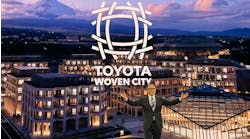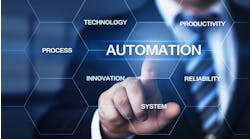The intelligent factory transformation—a journey not a destination
By Irene Petrick, Director of Industrial Innovation, Internet of Things Group, Intel Corporation and Faith McCreary, Principal Researcher, Internet of Things Group, Intel Corporation
When we envision the transformation to intelligent factories of the future, we put technology in a starring role. The notion that technology enables and humans hinder is a well-heeled belief. However, a recent Intel study of 145 manufacturing workers and leaders across manufacturing fields suggests that the opposite might be true.
Workers as change agents
We found that workers see themselves as change agents and they see clear value to adopting new technologies to keep their companies—and themselves—competitive. When we asked about the worst-possible situation five years from now, overwhelmingly “No Change” was deemed as the worst possible outcome.
Workers feel a mandate for change and see themselves as critical to framing the problem space and identifying possible solutions. 56% of study participants saw themselves as decision-makers at their companies, and we were surprised to learn that 98% of the workers we studied believe they have direct or indirect influence over technology adoption and implementation decisions.
And it’s not only the manufacturing leaders or managers who proclaim influence. It’s also operations and logistics coordinators, quality specialists, maintenance technicians and hands-on-line workers. These workers are potential allies in the path to the future, if only we can harness their interest in change.
Systems-of-systems view
But what makes smart technology solutions sticky in a company? What makes them scalable? Often times, companies view the intelligent factory as a destination, someplace to be. But there’s no one-size-fits-all path to the intelligent factory, and each company needs to envision the journey toward the intelligent factory. We are learning that the technology-process-worker view—a systems-of-systems view—is critical.
There are some pain-points that appear to cross manufacturing types. Nearly all of our manufacturers said that unplanned downtime was a key problem. Here sensors and AI analytics offer opportunities for predictive maintenance to drive proactive action to reduce unplanned downtime.
Moving forward beyond common pain-points, however, the balance of technology/processes/workers, we suspect, will be unique for each manufacturer. Small volume/high mix discrete manufacturers will have different needs when compared to economies-of-scale discrete manufacturers or continuous process manufacturers.
To begin the journey to the intelligent factory, companies must involve their workers. They also must involve their ecosystem partners. Complex IIoT solutions will likely require multiple inputs from system integrators, automation and control equipment vendors, communications providers, and machine builders, among others.
What’s next?
Intel is currently working on Phase 2 of our project in the journey to the intelligent factory—“How to accelerate the path toward autonomous operations.” We are seeking input from a broad range of manufacturing professionals to help us understand the barriers and facilitators of this journey. To learn more about the study and volunteer to participate, click here or contact study leaders Irene Petrick or Faith McCreary.


